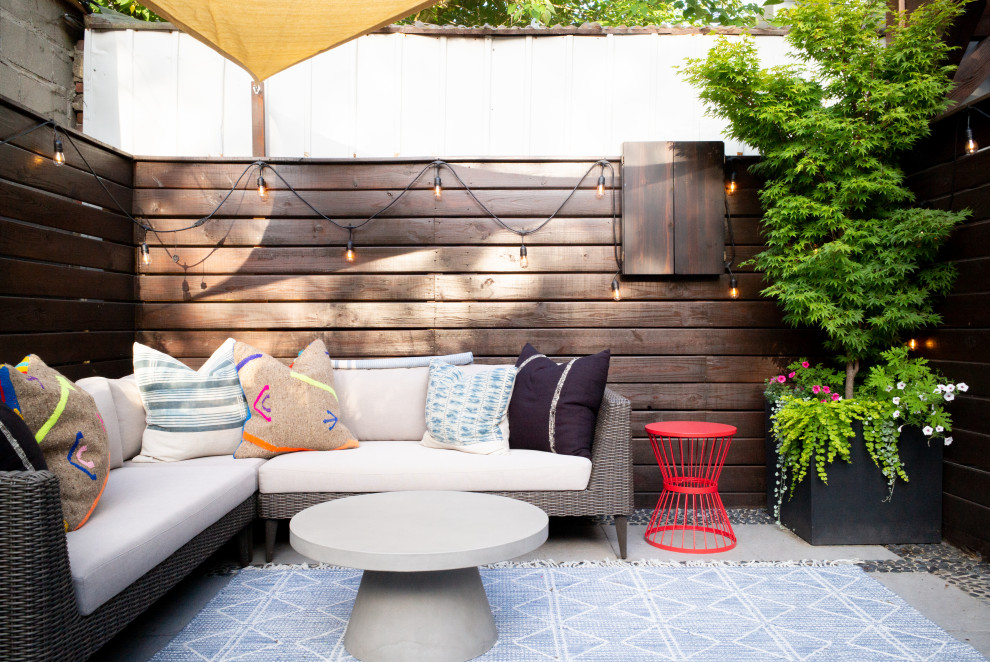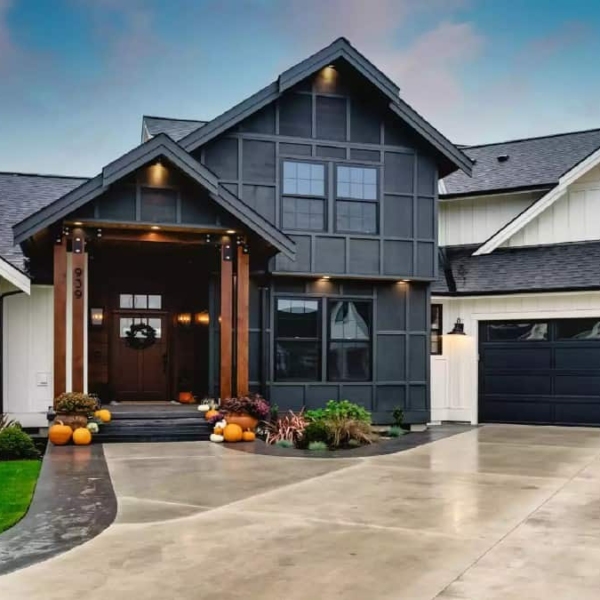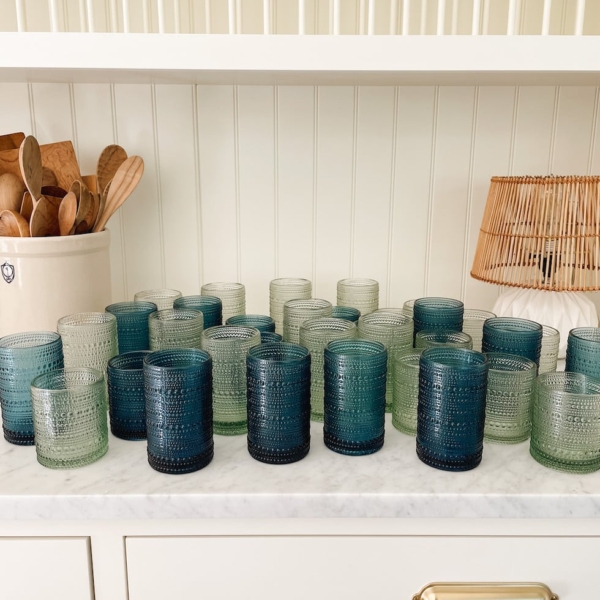Backyards have the potential to be a personal oasis where you can relax, rest, and recharge. A space that feels completely yours is essential for creating a relaxing environment, but there are some common pitfalls that can undermine your efforts.

Backyard privacy mistakes are frequently the result of a lack of planning, poor material selection, and a failure to consider their impact on aesthetics and functionality. These missteps can lead to solutions that are ineffective or detract from the overall appearance of the backyard. By being mindful of these common backyard privacy errors, you can design a better backyard and create a space that offers both seclusion and beauty.
Backyard Privacy Mistakes
Increasing privacy in your backyard is a common desire, as no one wants to sit back and relax with all their neighbors watching. However, there are both effective and ineffective ways to increase your backyard privacy. Knowing the most common backyard privacy mistakes before getting started will put you in the best position for success.
Lack of Planning

In the excitement of starting a project, it may seem too time consuming to take the time to thoroughly plan your project before you begin. Homeowners may select privacy solutions without considering the overall backyard plan, yard layout, sun patterns, or existing and future landscaping. This can lead to a disjointed design, mismatched styles, ineffective barriers, and blocking important views.
Take the time to thoroughly assess your backyard to avoid this mistake. Consider both how your backyard currently looks and how you want it to evolve in the future. Create a layout of the area, taking note of where privacy is most needed. Take into account the height and type of barriers you want to add to the yard. Consulting with a landscape designer can help you create a cohesive plan that balances privacy, function, and aesthetics.
Poor Selection of Materials

It is normal to want to cut costs by selecting inexpensive materials, but doing so can result in a number of issues, including poor durability, difficult upkeep, and aesthetically awkward combinations. For example, choosing low-quality fencing or fast-growing plant varieties will require constant, ongoing maintenance. Using cheap materials will most likely cost you more in the long run because you will have to replace them more frequently than if you had spent the money upfront on high-quality materials.
To avoid this mistake, thoroughly research potential materials before starting your project. Take into account your climate, aesthetic preferences, durability, ongoing maintenance, and cost. Choose the best materials you can afford when building your privacy structures. Consider treated wood, cedar, composite, or vinyl while keeping price and aesthetics in mind. Look for hardy plant varieties that thrive in your local climate and that thrive without onerous maintenance or excessive water.
Overlooking Aesthetics

When it comes to creating privacy in the backyard, many homeowners prioritize this primary goal while overlooking the aesthetics of the privacy solution or the entire backyard. Solid and imposing structures can appear overwhelming in the context of the yard, making it feel claustrophobic and unwelcoming. Certain materials can be effective privacy barriers, but they may not complement the style of your garden and outdoor decor. All of these factors must be taken into account when designing backyard privacy solutions.
Consider how to use backyard barriers to create harmony and balance by selecting specific colors, materials, and designs. Use plants and vines to soften the hard, solid surfaces. Paint the walls and trellises in colors that complement the landscape or the decor in your backyard. To add depth and interest to your backyard while maintaining privacy, use a combination of heights and textures, including hardscapes and plants.
Ignoring the Impact on Neighbors

For most of us, the privacy barriers we build will directly impact the views and the look of the backyards of our neighbors. Large structures or dense plantings can block the sunlight in your neighbor’s yard and block the open expanse. Installing privacy solutions without consulting the neighbors that they impact will result in disputes and strained relationships.
To mitigate the frustration they may feel with the changes in your backyard, it is necessary and polite to communicate with them before you make significant changes in your yard. Discuss the changes with them, and be open to their suggestions. While you may not be willing or able to change your plans, you might be able to make adjustments that don’t significantly change your structure but make them more amenable to the yard alteration. A collaborative approach will promote more good will and create the best neighborly relations going forward.
If your initial privacy structure ideas do not meet your neighbor’s needs and you decide not to proceed, you can consider alternative privacy solutions that have a lower impact on your neighbor’s property. Partial screens and privacy plants, for example, can add privacy to your space while having a minimal impact on theirs.
Not Consulting Local Building Codes

Local building codes exist to keep us from making mistakes that jeopardize our safety and the structural integrity of the building. When you are excited about starting a project to create privacy in your backyard, consulting building codes can feel too time-consuming and restrictive. This is a critical error that can result in significant fines, mandatory modifications, or the structure’s removal.
Instead, you should always consult the local building codes before you begin even planning the privacy structure. As a result, you will only consider feasible structures and ideas since they will be in line with the codes from the start. In addition to reviewing building codes, make sure you secure the required licenses and inspections to guarantee the structure complies with the relevant local guidelines.
Neglecting Maintenance

Ignoring the upkeep of your plants or privacy structure can cause them to deteriorate and lose their effectiveness over time. The sun can wear down fences and trellises, and plants can become leggy and lose their shape. Maintenance of your structures and plants will always be required, but it will be especially true if you choose plants and structural materials that require more attention, either because they are not appropriate for your area or because they are of poor quality.
To avoid making this mistake, establish a regular maintenance schedule for both your backyard structures and plants. For fences or other structures, this may include inspecting them on a regular basis for damage so that broken areas can be repaired or painted to protect the base material’s integrity. Plants must be pruned, fertilized, and watered on a regular basis to remain healthy and well-shaped.
Blocking the Sunlight and Views

Blocking some sunlight and specific vistas in the backyard is often a necessary part of creating privacy, but shading the area from too much sun or obstructing all outward views can make the area feel overcrowded, unappealing, and dark. This often happens when large, solid structures are used without consideration of the landscape or the movement of the sun.
A better approach is to assess the entire area before constructing your privacy structures. Consider the amount of sunlight available throughout the day as well as the views you want to keep open. While some solid structures may be necessary, consider how to strategically place them to avoid negative consequences, or use semi-transparent structures. Lattice panels, trellises with climbing plants, or spaced-out hedges can provide privacy without closing off the area.
Overcrowding Plants

Plant overcrowding is a common mistake in all types of landscaping. We plant larger-than-necessary plants to fill out the space initially, leaving no room for future growth, because we are impatient and want the space to look complete. This will eventually lead to mature plants and trees being too close together, causing competition for nutrients and water, as well as unhealthy growth patterns.
Before you begin planting, research the mature size and growth habits of the plants you intend to use. They should be spaced appropriately at the time of planting to ensure good air circulation and healthy development when they mature. If your privacy plants are overcrowded, consider pruning and/or thinning them and moving the excess plants to other areas. While this may initially result in bare areas, it will eventually lead to healthier and more attractive plants.
Neglecting Vertical Space

Not considering vertical space in the backyard is a missed opportunity, especially in small backyards. While it is important not to make the backyard feel too enclosed, maximizing vertical space can provide effective shade and add depth to your privacy design.
Consider trellises, shade sails, overhead lattices, and pergolas. These still provide dappled sunlight while also offering shade. Climbing vines, green wall plants, and hanging planters help to soften the appearance of vertical and overhead structures. This is also an excellent way to elevate your greenery, adding depth and texture to the garden design.


